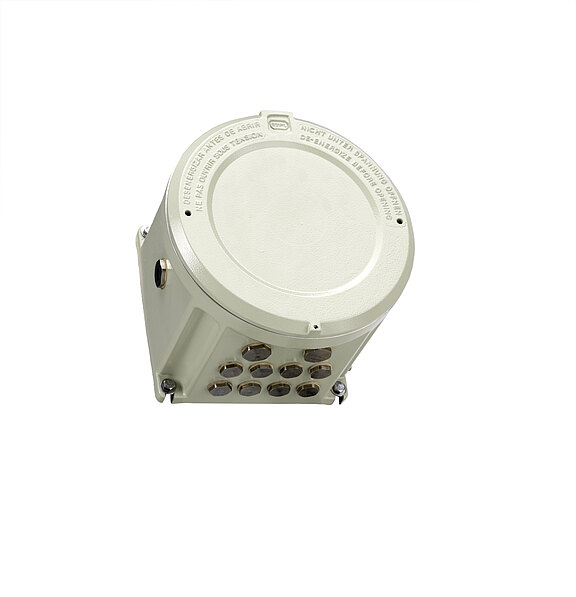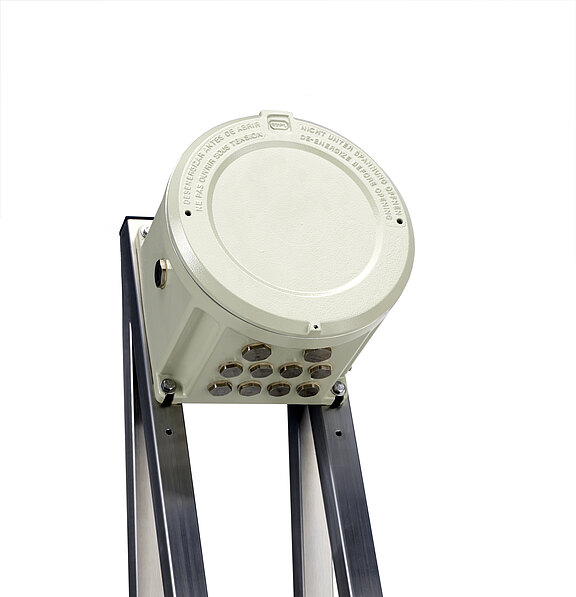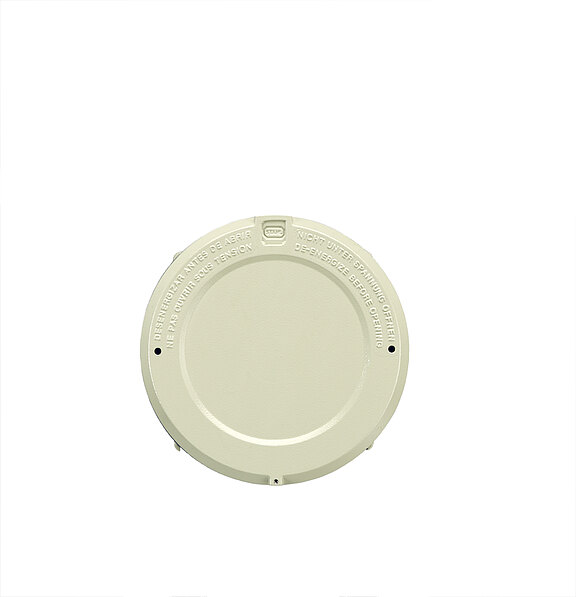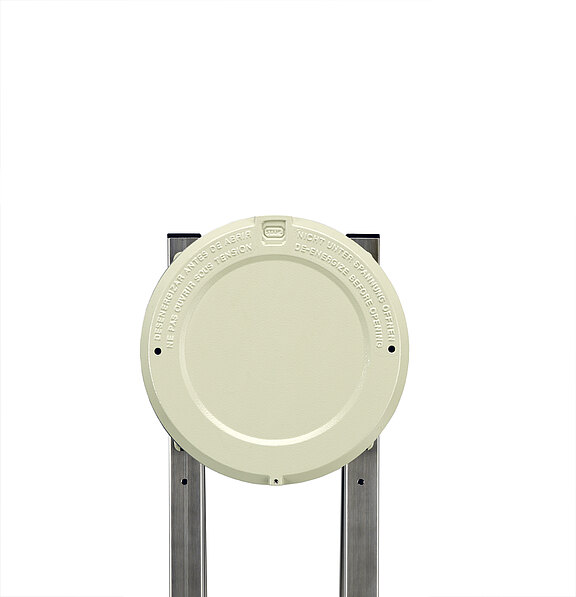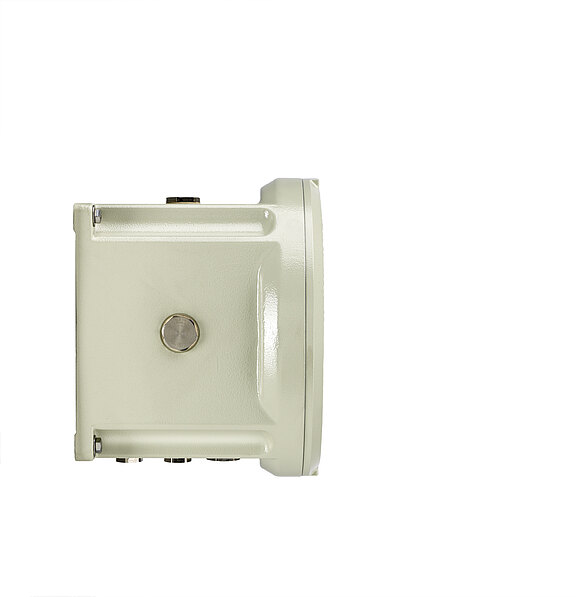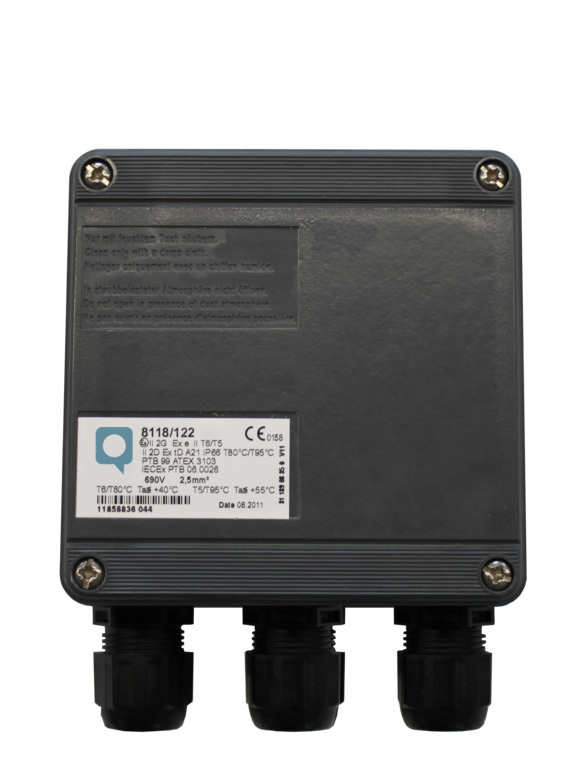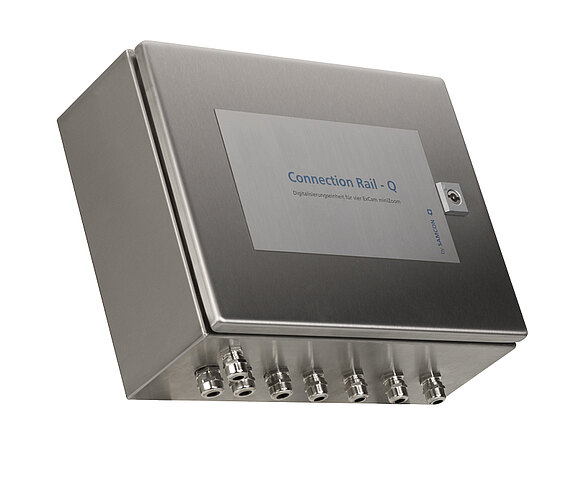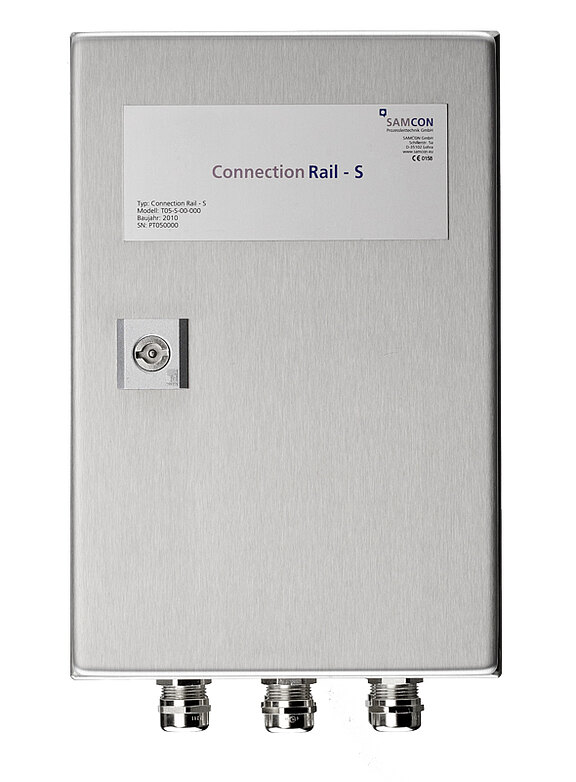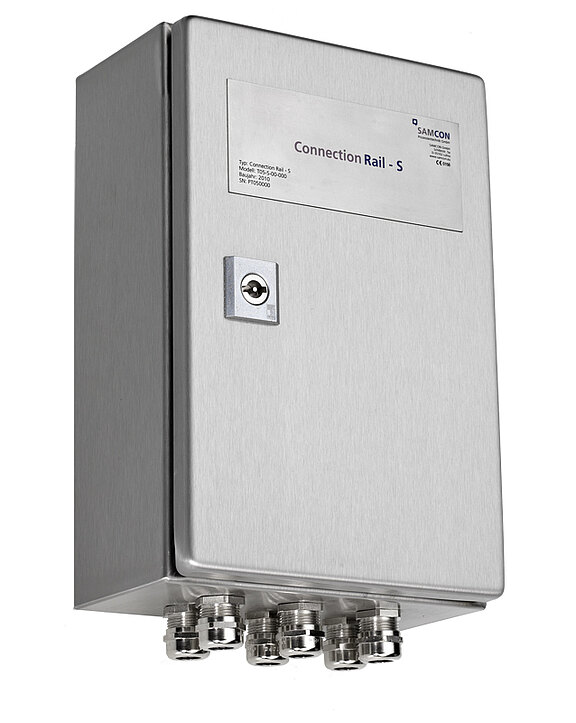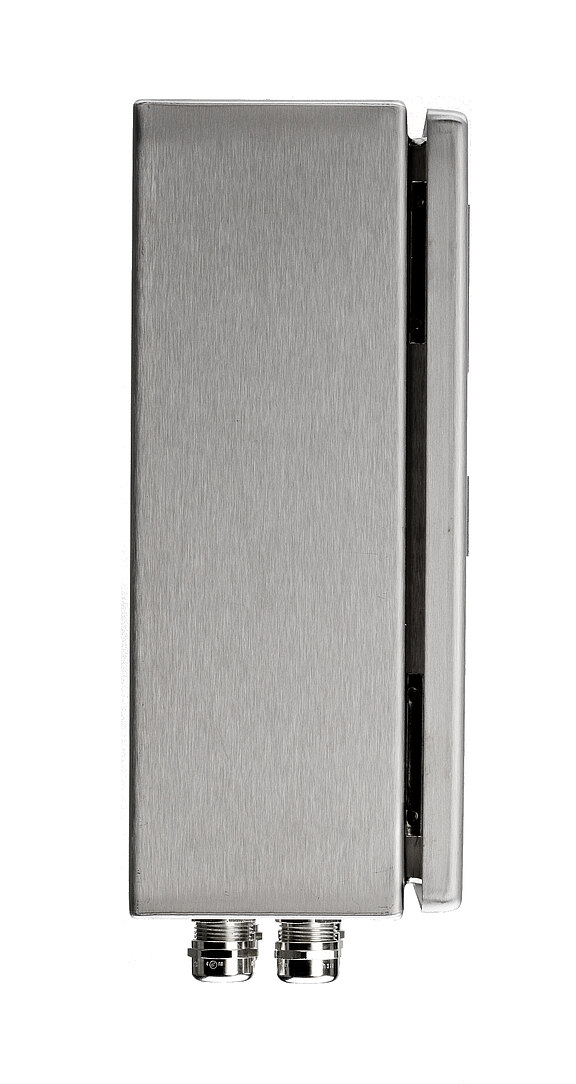Connection and Transmission Systems for safe and hazardous areas
Our connection and transmission units are especially designed to connect our network cameras or other network participants.
Thanks to a variety of accessories and combination possibilities every problem could be solved individually.
The ConnectionRail series converts video, audio and binary signals in ethernet-network streams and makes them available over long distances.
As part of the ConnectionRail series, ATEX certified equipment for use in hazardous areas, and non-ATEX equipment for industrial control environments are available. Interface diversity makes our ConnectionRails solve every digitalisation task. Cameras from renowned manufacturers can be controled via RS232/RS422 or RS485 interface network-based. Explosion proof speakers, intrinsically safe microphones and DECT base stations can be connected. Networking can be realized via fiber optic cable, copper Ethernet or wireless.
Analogcameras-digitalnetworks
Camera and communications systems can be analogue or digital. In analog camera systems the image signal is transmitted in analog (composite). The most important standards are PAL and NTSC formats. High-performance digital cameras, like our ExCam e.Vario can be controlled via bit-serial digital interfaces. In digital camera systems (networks) the image information and, if necessary, the audio information if using the TCP/IP protocol for transmission (Video over IP, Voice over IP).
Especially in basic- and detail-engineering of camera and communications systems in hazardous areas the advantages of both systems (analog camera systems and digital networks) have to be used. In field-installation, analog camera often have benefits, compared to digital, so-called IP cameras.
For example, cables to analog cameras, like the ExCam e.Vario can be up to 200 meters long. Network cables (Cat5e) to IP cameras should not exceed a length of 100 meters. In addition, analog cameras are built much more compact than IP cameras, which saves space and makes flameproof analog camera systems more economical.
Nevertheless, the future lies in digital networks. Only through the integration of video and audio signals into the Ethernet, the signals are available for other network participants.
Installation distances in digital camera systems do not matter - information can be transmitted worldwide via the Internet if needed. To visualize the camera images, conventional ethernet computers can be used. Software solutions are important tools and replace expensive hardware . Effective integration into process control systems is possible.
Missing Link
The Connection Rail series converts audio and video streams into digital network streams. The Connection Rails therefore turn every camera into an IP one. Interface drivers for the Connection Rails, which enable control of dome or zoom cameras via the Ethernet, are available for all renowned camera models. Audio devices, suchas loudspeakers, microphones or DECT base stations become VoIP servers thanks to the Connection Rail. Our Connection Rail series allows you to be able to exploit the benefits of analogue cameras AND digital networks, without having to put up with disadvantages or quality losses!
It does not always have to be ATEX
The question as to where video and audio signals should be best digitalised is always a planning issue. If the installation paths from the safe electrical cabinet room to the explosion risk zone are short, it is advisable to mount the Connection Rail in the safe zone. Should explosion risk zones be developed large distances away, it is occasionally essential and more efficient to digitalise in the field. No matter what project implementation you choose, with the ATEX-certified ExConnection Rail or the Connection Rail for safe zones, you always have the optimum digitalisation device for every planning task.
Hardware
The Connection Rail series is the „Plug & Play“ solution for digitalising analogue camera and audio signals from explosion risk zones. All the components and connections are coordinated to this. The centrepiece of the Connection Rails are video audio servers from AXIS Communications, which we modify in the Connection Rail for the usage conditions. Furthermore, the Connection Rail contains power supplies, fuses, coupling relays, and, if necessary, media converters or WLAN access points.
The Connection Rails are supplied with complete technical documentation, circuit diagrams, user manuals and preinstalled camera drivers. The installation and commissioning of the Connection Rail can be reduced to elementary, simple steps: Establish the power supply – connect the network – connect the cameras. And you‘re done!
FOC, Copper or WLAN Ethernet
Ethernet signals can be transferred via copper line (Cat5), fibre optic cable or radio (WLAN). These transfer media may vary in any way in the case of our Connection Rails (see network example on page 4). For long installation paths to the next active network participant, it is advisable to use fibre optic cables. An industrial access point, which supports all common operating types, such as Bridge or WDS, is used as a WLAN unit. A Connection Rail with WLAN turns analogue cameras into WLAN cameras. And it can do this in an explosion risk zone, if necessary.
Speaking and Hearing through the Ether
VoIP (Voice over IP) technology is increasingly finding its way into our telephone networks. With the VoIP interface in our Connection Rails, there exists the option of addressing via the Ethernet outlying audio devices, such as loudspeakers, microphones or DECT base stations, in explosion risk zones. This means that you say something into a microphone on your computer and your words are forwarded to the explosion risk zone via a loudspeaker. In return, you hear via a sound card on your computer what is being said to a room microphone in the explosion risk zone. The special feature of VoIP technology in this example is that it is not important where you are or your computer is located!
Should you prefer a radio interface for the audio connection, opt for our DECT ExNF Interface, a DECT base station with radio approval for explosion risk zones. It enables full-duplex audio communication between up to four ATEX-certified headsets and you or your computer!
| Scheme/market | No. | Ex-Installation Manual |
|---|---|---|
| ATEX Certificate | TÜV 10 ATEX 7969X (2023) | DE, EN |
| IECEx Certificate | TUR 16.0025X (2023) | EN |





